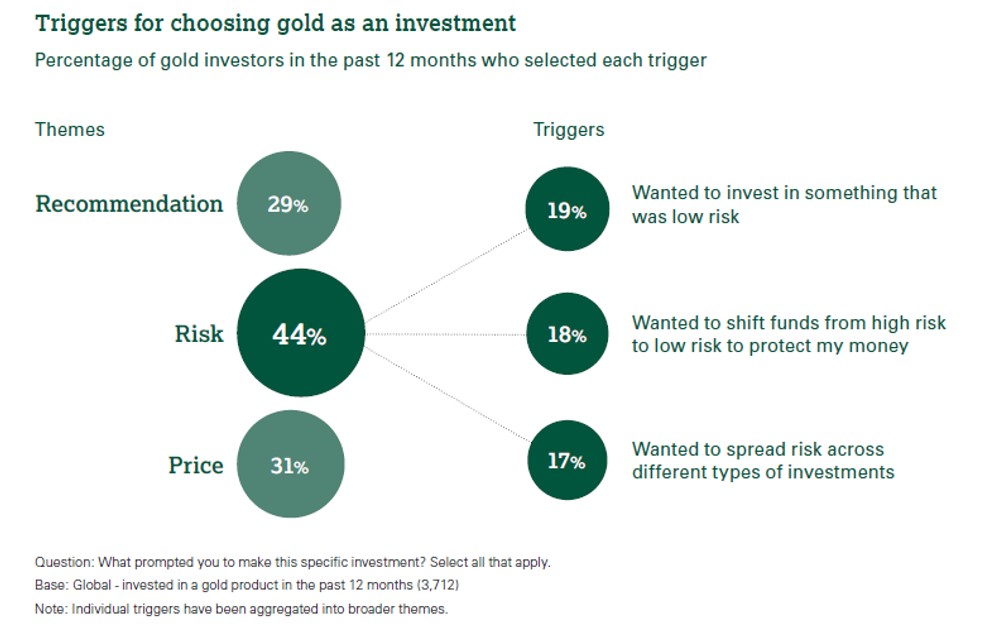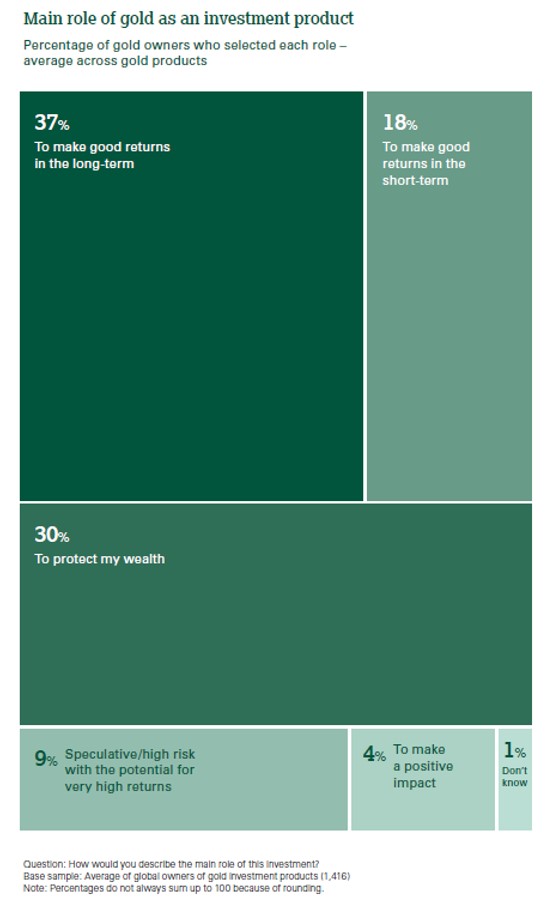
Content supplied by the World Gold Council.
Gold has long been recognised as a safe haven, an asset that investors seek out for protection and security during uncertain times. As our Director of Market Intelligence, Alistair Hewitt, put it in a recent interview "Gold historically benefits from flight-to-quality inflows during periods of heightened risk and, by providing positive returns and reducing portfolio losses, gold has been especially effective during times of systemic crisis when investors tend to withdraw from stocks."
That certainly seems to have been borne out over the last week, with the US$ gold price reaching a seven-year high.
Accordingly, the recent escalation of tensions on the global stage has reportedly sparked a fresh wave of gold investment in the UK. A statement by the Royal Mint attributed a 572% increase in sales revenue and a 416% increase in average order value at its Bullion division last weekend to the outbreak of violence and increasing hostility between the US and Iran.
Consumer research confirms that this is far from being just a UK phenomenon. Our global survey of 12,000 retail gold investors from North America to China, via Germany, India and Russia, showed that 44% of investors who had bought gold in the last 12 months did so in response to risk factors. And gold was their top choice of investment product with which to manage risk, ahead of even government bonds.

This is echoed in the role that retail investors see gold playing in their portfolio. On average, 30% of global retail investors who own gold say that its main role is to protect their wealth.

Our recently released report confirms that risk aversion was also a key driver of inflows into global gold-backed ETFs in 2019, contributing to the 400-tonne increase in holdings of those products over the year.
Interestingly, we see similar attitudes driving the behaviour of gold jewellery products. Gold serves a dual purpose: its inherent value means that consumers buying gold jewellery often view the purchase through an additional investment lens. And, of the 6,000 jewellery consumers surveyed in our research, 65% said they trust gold more than the currencies of countries. Almost the same number agreed that gold makes them feel secure in the long term.
While the US-Iran crisis appears to be stepping back from the brink, tensions remain high and could continue to drive gold investment: indeed, we have recently highlighted financial and geopolitical uncertainty as a key potential driver of gold demand for 2020. Combined with the continued low-rate environment and continued robust buying by central banks, we expect that investors will continue to value gold’s safe haven qualities over the year ahead.
This article is a re-post from here.
![]() Our free weekly precious metals email brings you weekly news of interest to precious metals investors, plus a comprehensive list of gold and silver buy and sell prices.
Our free weekly precious metals email brings you weekly news of interest to precious metals investors, plus a comprehensive list of gold and silver buy and sell prices.
To subscribe to our weekly precious metals email, enter your email address here. It's free.
Comparative pricing
You can find our independent comparative pricing for bullion, coins, and used 'scrap' in both US dollars and New Zealand dollars which are updated on a daily basis here »
Precious metals
Select chart tabs
11 Comments
Good looks to be the next bubble Ponzi to me and its yet to take off, get in now while its cheap, no one was talking about bitcoin at $3, few at $30 usd.... now 12k nzd. The central banks hold this just in case, I think we the people should hold some as well
Average annual return on the gold price in AUD is approx 10% p.a. since 2005. Relatively speaking, you could argue that it's already "taken off". That's not the way I like to think about gold. IMO the best way to think about gold is not about it being autonomous in its value, but more about being of value relative to fiat currency debasement. Pierre Lassonde sees different scenarios for the gold price and suggested that using CAGR over the long term, the price should be closer to USD12,500 / oz and as high as USD25K.
At 25k USD you have to image that FIAT has been somewhat abandoned and a new gold backed or semi gold backed has been adopted.... The world would be a very different place.
Here an article from the Dutch Central Bank.
Generally CB's don't talk about gold so it is surprising to come across an article like this:
De Nederlandsche Bank (DNB) holds more than 600 tonnes of gold. A bar of gold always retains its value, crisis or no crisis. This creates a sense of security.
A central bank's gold stock is therefore regarded as a symbol of solidity.
More:
https://www.dnb.nl/en/payments/goud/index.jsp#
Fiat money is “easy money” it’s easy to inflate, gold is “hard money” it’s hard to inflate.
Quite interesting that the gold price reacted to the Iraq strikes but then retraced the next day. However, what I have noted is that the price seems to have pushed through the USD1,550 resistance. For technical traders, the relevance of this will be salient. I also noticed that the appreciation of JPY/USD was quite muted to what we would expect in the past. The relationship between gold and JPY is quite fascinating.
From Bloomie, 'Signs Gold Prices May Be About to Go Sharply Higher'. Nice summary free of any dogma.
I will not be surprised at all if gold goes to its previous high of US$1889 and well beyond during the next few years, as sharemarkets hit trouble. It’s been a record long run for US stocks, it’s only a matter of time. I say position accordingly.
Yes, possibly. What I notice about many of the opinion leaders of gold is that their forecasts are usually conservative on the whole. For ex, a regular on Kitco interviews was saying the gold price could hit USD1,600 in 2020. 7% in this day and age is not spectacular. Also, important to remember that leading up to the GFC, the gold price was charging, just like everything else. From 2001 to end of 2011, it's rise was massive. You never would have read about it in Granny Herald.
China is also diversifying its foreign exchange away from US dollars. Not much to choose from except euros, yen and gold. No prizes for guessing what it’ll choose - will further underpin the price.
wake up people https://www.youtube.com/watch?v=70MhywXK2pg&t=6s
crypto is the answer...


We welcome your comments below. If you are not already registered, please register to comment.
Remember we welcome robust, respectful and insightful debate. We don't welcome abusive or defamatory comments and will de-register those repeatedly making such comments. Our current comment policy is here.